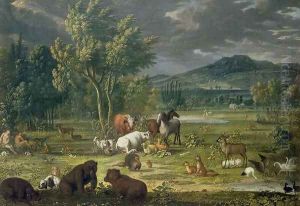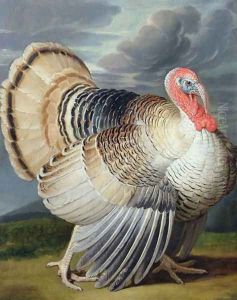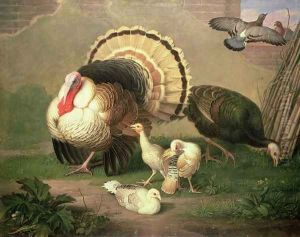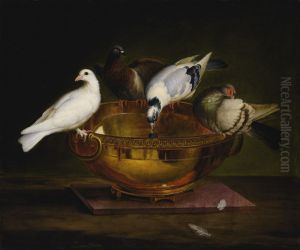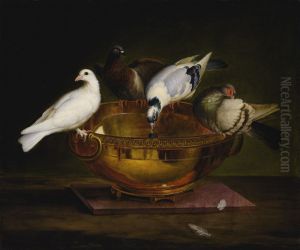Johann Wenzel Peter Paintings
Johann Wenzel Peter was an Austrian painter who is best remembered for his detailed and lifelike depictions of animals and plants. Born on March 15, 1745, in Unterschefflenz, Electorate of Mainz, which is now part of Germany, Peter demonstrated a talent for drawing and painting at an early age. His artistic inclinations led him to pursue a career that would see him become one of the most prominent animal painters of his time.
Peter's artistic education began in his homeland, but he traveled to Rome in 1773 to further his studies, a city that was then the epicenter of artistic learning and innovation. His move to Rome proved to be a pivotal moment in his career. There, he was exposed to the works of classical antiquity and the Renaissance, which influenced his technique and subject matter. Peter quickly became part of the vibrant art scene in Rome, and his work started to gain recognition for its precision and beauty.
In Rome, Johann Wenzel Peter honed his skills in depicting flora and fauna with remarkable accuracy. His paintings often featured a variety of animals, from domestic livestock to exotic creatures, set within lush landscapes or idyllic settings. Unlike many of his contemporaries who focused on religious or historical themes, Peter dedicated himself almost exclusively to the study of nature. His commitment to naturalism and his ability to capture the essence of his subjects won him many commissions, including work for religious institutions where his paintings often served as allegories of faith and creation.
By the late 18th century, Peter had established himself as a leading animal painter. His reputation earned him the patronage of prominent individuals, including members of the Catholic Church. One of his most significant patrons was Pope Pius VI, for whom he produced several works. Peter’s paintings can be found in various churches in Rome, and his work was influential in the development of animal painting as a genre in European art.
Johann Wenzel Peter's legacy is one of an artist who possessed a profound understanding of the natural world. His ability to animate the animals and plants he painted with such vibrancy and detail has left a lasting impact on the field of naturalist art. Peter passed away on July 28, 1829, in Rome, leaving behind a body of work that continues to be admired for its artistry and its contribution to the naturalist tradition in European painting.
